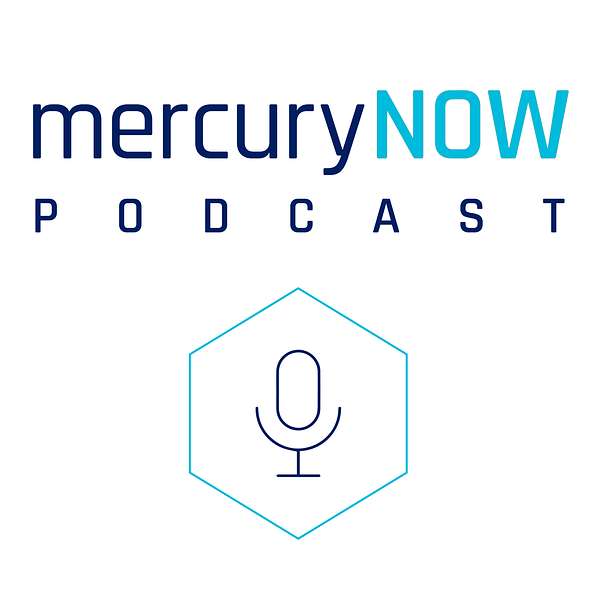
MercuryNOW
MercuryNOW
Distributed processing at the edge: Mercury talks RF at the 2022 International Microwave Symposium
In an increasingly competitive electronic environment, advanced radar electronic warfare and communication systems are pushing the limits of what is possible. Tune in to hear how Mercury is taking higher signal frequencies, higher signal bandwidths, lowered latencies in the processing tasks, and smaller form factors to the edge.
Ralph Guevarez: In an increasingly competitive electronic environment, advanced radar electronic warfare and communication systems are pushing the limits to what is possible. Hello and welcome to MercuryNOW, a vodcast series brought to you by Mercury Systems. I am your host, Ralph Guevarez, and today, we are coming to you live from the International Microwave Symposium in beautiful Downtown Denver, where Mercury is showcasing trusted high-speed performance solutions for mission critical systems in space-constrained applications. Joining me today is Rodger Hosking, Director of Sales for Mercury Systems. Rodger, good to see you again.
Rodger Hosking: Good to be here, Ralph.
Ralph Guevarez: Good to see you. Rodger, let's dive right in, okay? What demands or requirements are you hearing from customers that's driving today's design for Mercury's engineers?
Rodger Hosking: In general, customers are asking us to handle higher signal frequencies, higher signal bandwidths, lowered latencies in the processing tasks, smaller form factors, lighter weight, and moving the tasks to the edge, where the sensors are located close to the antenna, for example, as opposed to having big mainframes. That gives you a distributed processing rather than a centralized processing as a new paradigm that our customers are looking for.
Ralph Guevarez: Thank you for that, Rodger. I appreciate your insights. Now, expanding on those points, what type of products has Mercury developed to meet those customer needs?
Rodger Hosking: One of the most exciting new products is the RF SiP, which combines eight 64-gigasample per second aided downconverters and the Versal AI FPGA all in a single multichip module in a ball grid array package. Extremely important. Another is the RFSoC module that combines eight channels of five-gigasample per second, 14-bit A/D and D/A, all in a very small form factor that's very suitable to put right up behind the antenna or at the edge. So, the other thing that our we offer are MMIC devices. These are chip scale RF devices that could be used for amplifiers, tuners, and up converters, down converters in very, very small packages. Again, meeting the requirements that I talked about before.
Ralph Guevarez: Now, are these products all SOSA aligned?
Rodger Hosking: No. Many of the products will work, however, with SOSA aligned products, the ones I talked about. For example, you have a sensor that's at the edge, for example, up in an antenna masts, you have an antenna, you have edge processing at the antenna, the signals from the antenna, and then, come down through a hundred gigabit ethernet cables into a SOSA chassis for doing the final single processing.
Ralph Guevarez: Thank you for that, Rodger. Now, lastly, could you please explain to our viewers, why are these products so important?
Rodger Hosking: Sure. These products are essential to our military so we can keep the advantage over our adversaries. We deliver solutions from chip scale to system scale, and the range of these products helps keep our military at its peak and keeps it ahead of the enemy.
Ralph Guevarez: Rodger, I want to take this opportunity to thank you for your time. It was great talking to you.
Rodger Hosking: Great.
Ralph Guevarez: And I look forward to talking to you again.
Rodger Hosking: Thanks, Ralph.
Ralph Guevarez: Thank you again. This is Ralph Guevarez, coming to you live from the international microwave symposium in Denver, Colorado, signing off. For more information on our products and everything that we've discussed today, please visit us at mrcy.com.